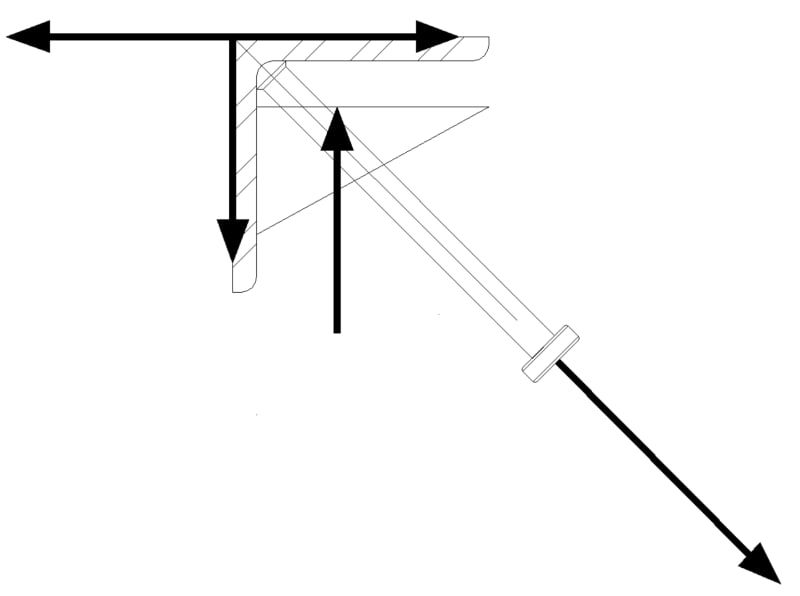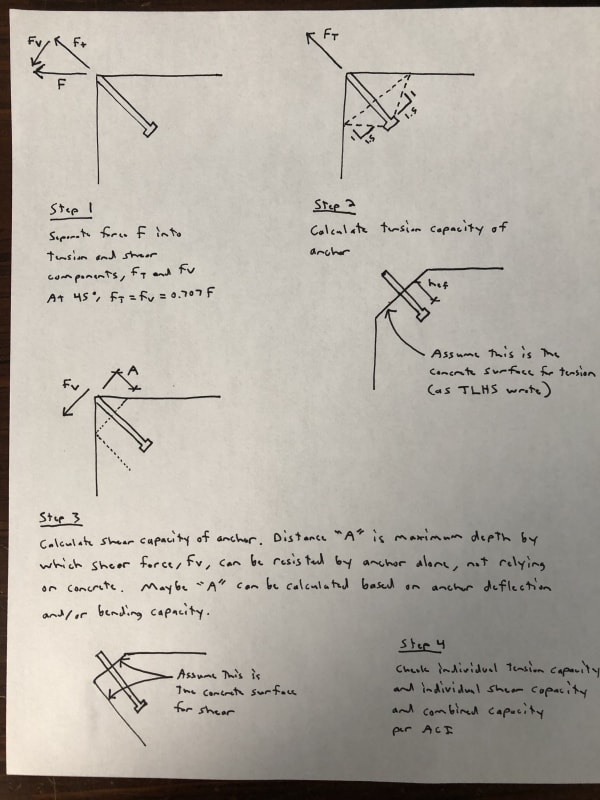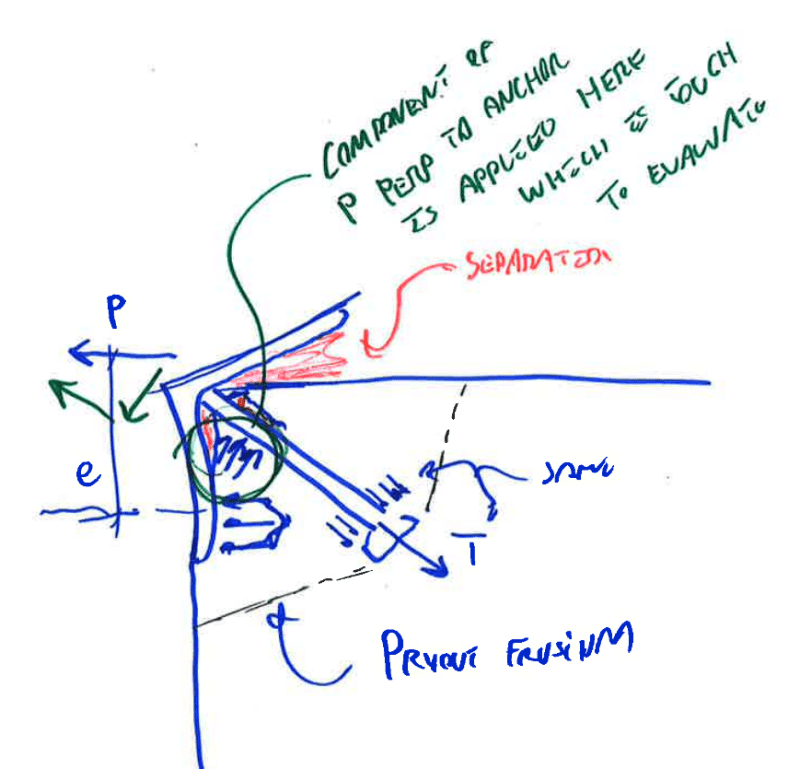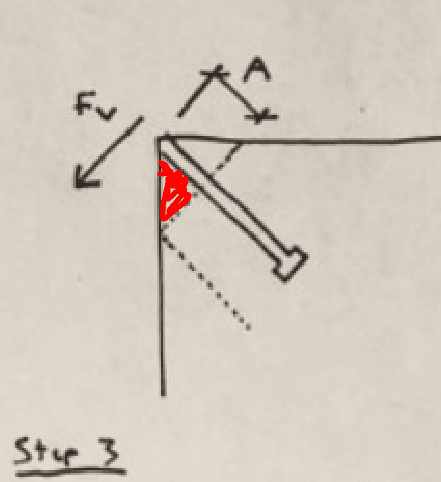canwesteng
Structural
- May 12, 2014
- 1,600
I'm analyzing some embedded plates with nelson studs welded in at an angle. I haven't had much luck finding this exact connection for some reason, even though it is pretty common. This is how I've decided to analyze it, kind of like some other precast connections, but wondering if there is a less conservative way to look at this.








